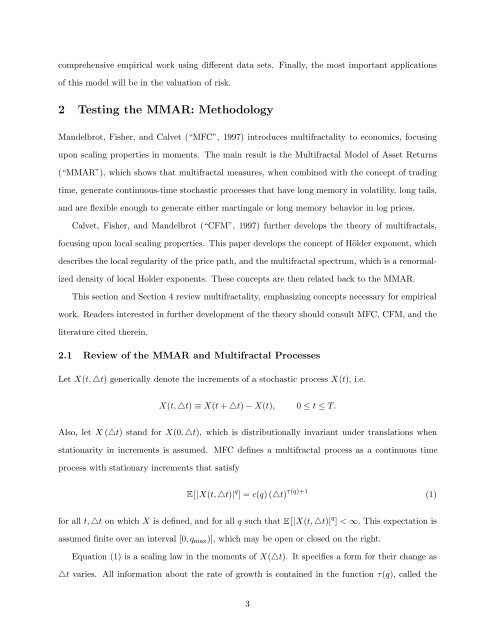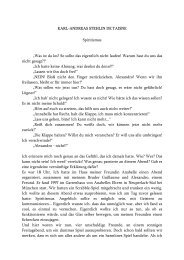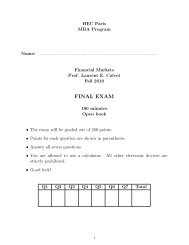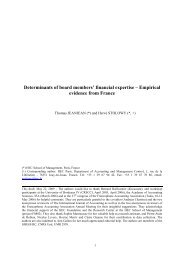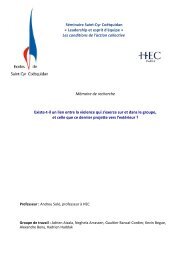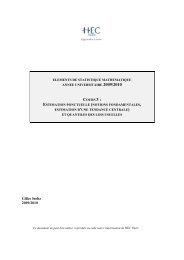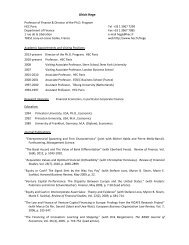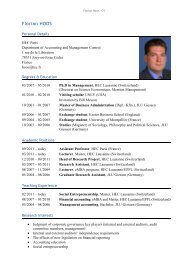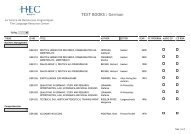Multifractality of US Dollar/Deutsche Mark Exchange Rates - Studies2
Multifractality of US Dollar/Deutsche Mark Exchange Rates - Studies2
Multifractality of US Dollar/Deutsche Mark Exchange Rates - Studies2
You also want an ePaper? Increase the reach of your titles
YUMPU automatically turns print PDFs into web optimized ePapers that Google loves.
comprehensive empirical work using different data sets. Finally, the most important applications<br />
<strong>of</strong> this model will be in the valuation <strong>of</strong> risk.<br />
2 Testing the MMAR: Methodology<br />
Mandelbrot, Fisher, and Calvet (“MFC”, 1997) introduces multifractality to economics, focusing<br />
upon scaling properties in moments. The main result is the Multifractal Model <strong>of</strong> Asset Returns<br />
(“MMAR”), which shows that multifractal measures, when combined with the concept <strong>of</strong> trading<br />
time, generate continuous-time stochastic processes that have long memory in volatility, long tails,<br />
and are flexible enough to generate either martingale or long memory behavior in log prices.<br />
Calvet, Fisher, and Mandelbrot (“CFM”, 1997) further develops the theory <strong>of</strong> multifractals,<br />
focusing upon local scaling properties. This paper develops the concept <strong>of</strong> Hölder exponent, which<br />
describes the local regularity <strong>of</strong> the price path, and the multifractal spectrum, which is a renormal-<br />
ized density <strong>of</strong> local Holder exponents. These concepts are then related back to the MMAR.<br />
This section and Section 4 review multifractality, emphasizing concepts necessary for empirical<br />
work. Readers interested in further development <strong>of</strong> the theory should consult MFC, CFM, and the<br />
literature cited therein.<br />
2.1 Review <strong>of</strong> the MMAR and Multifractal Processes<br />
Let X(t, △t) generically denote the increments <strong>of</strong> a stochastic process X(t), i.e.<br />
X(t, △t) ≡ X(t + △t) − X(t), 0 ≤ t ≤ T.<br />
Also, let X (△t) standforX(0, △t), which is distributionally invariant under translations when<br />
stationarity in increments is assumed. MFC defines a multifractal process as a continuous time<br />
process with stationary increments that satisfy<br />
E [|X(t, △t)| q ]=c(q)(△t) τ(q)+1<br />
for all t, △t on which X is defined, and for all q such that E [|X(t, △t)| q ] < ∞. This expectation is<br />
assumed finite over an interval [0,qmax)], which may be open or closed on the right.<br />
Equation (1) is a scaling law in the moments <strong>of</strong> X(△t). It specifies a form for their change as<br />
△t varies. All information about the rate <strong>of</strong> growth is contained in the function τ(q), called the<br />
3<br />
(1)


